Nothing says autumn like a pumpkin farm! Students will create their own pumpkin patch equipped with a tractor and the elements of line and texture. This project covers Common Core Standards for History and Science for grades K-2 which can be found at the end of the lesson.
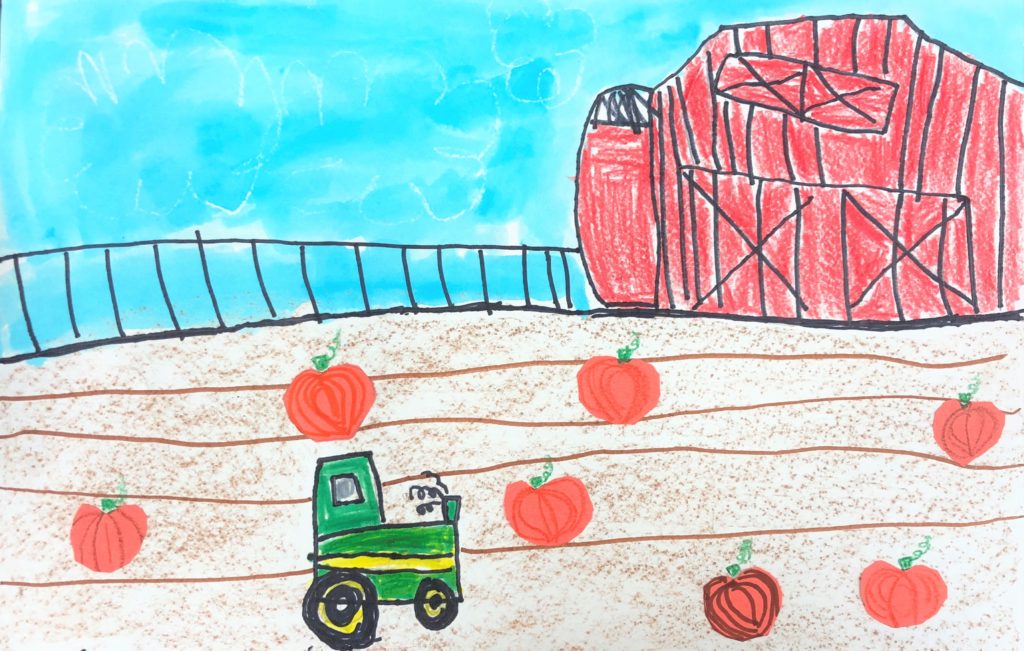
Grade Level
Kindergarten, 1st, 2nd Grade – The examples in this lesson are made by Kindergartners.
Objective
In this Pumpkin Farm lesson, students will design a pumpkin farm with a barn, tractor and a pumpkin patch using the elements of line and texture.
Time
6 – 30 min lessons
Materials
- Pencils
- Markers: Brown, Orange, Green
- Crayons: red, brown
- Markers: Green, yellow, silver (for the tractor window or grey crayon)
- White oil pastels – or white crayons if needed
- Scissors
- Glue Stick – Elmer’s Glue Stick (E4062) (7 sticks)
- 12×18 Watercolor paper – Canson XL Series Watercolor Textured Paper Pad for Paint, Pencil, Ink, Charcoal, Pastel, and Acrylic, Fold Over, 140 Pound, 12 x 18 Inch, 30 Sheets
- Brushes – Acrylic Paint Brush Set, 1 Packs / 10 pcs Nylon Hair Brushes for All Purpose Oil Watercolor Painting Artist Professional Kits
- Liquid Water Colors – Sargent Art 22-6061 8-Ounce Watercolor Magic, Turquoise
- Black Sharpie Marker – SHARPIE Permanent Markers, Fine Point, Black, 2 Ct
- Kleenex for blotting paint
Inspiration/Artist
Autumn Pumpkin Farms.
I was inspired to make this project after I saw this idea: Click Here
Instruction with Questions
Day 1
Review what students know about Line, Texture, and Patterns. Define each one with the students with examples.
Line:
A line is an identifiable path created by a point moving in space. It is one-dimensional and can vary in width, direction, and length. Lines often define the edges of a form. Lines can be horizontal, vertical, or diagonal, straight or curved, thick or thin.
Texture:
Texture refers to the way an object feels to the touch or looks as it may feel if it were touched.
Pattern:
Repetition refers to one object or shape repeated; pattern is a combination of elements or shapes repeated in a recurring and regular arrangement
Next:
Show them the following videos:
Line defined – From Goodbye-Art Academy: Click here
Texture defined – From Goodbye-Art Academy: Click here
And just for fun – Even my older students love this – Sesame Street: Abby Cadabby teaches Josh Gad about Texture: Click Here
Day 2 and 3
I followed the directions on this site from Jamestown Elementary: Click Here
I guided the students in how to make the horizon line using black sharpie. For the tractor, I did a step by step guided drawing that we practiced on Day 2 and finished on Day 3. Before we even practiced drawing a tractor, we colored one in and discussed what we saw and knew about how a tractor looks.
I used the free coloring page found on this site: Click Here

Then, when they drew the ground lines, we skipped over the tractor. They made the ground lines with the brown marker (no pencils), and went outside and rubbed the texture on with a brown crayon.
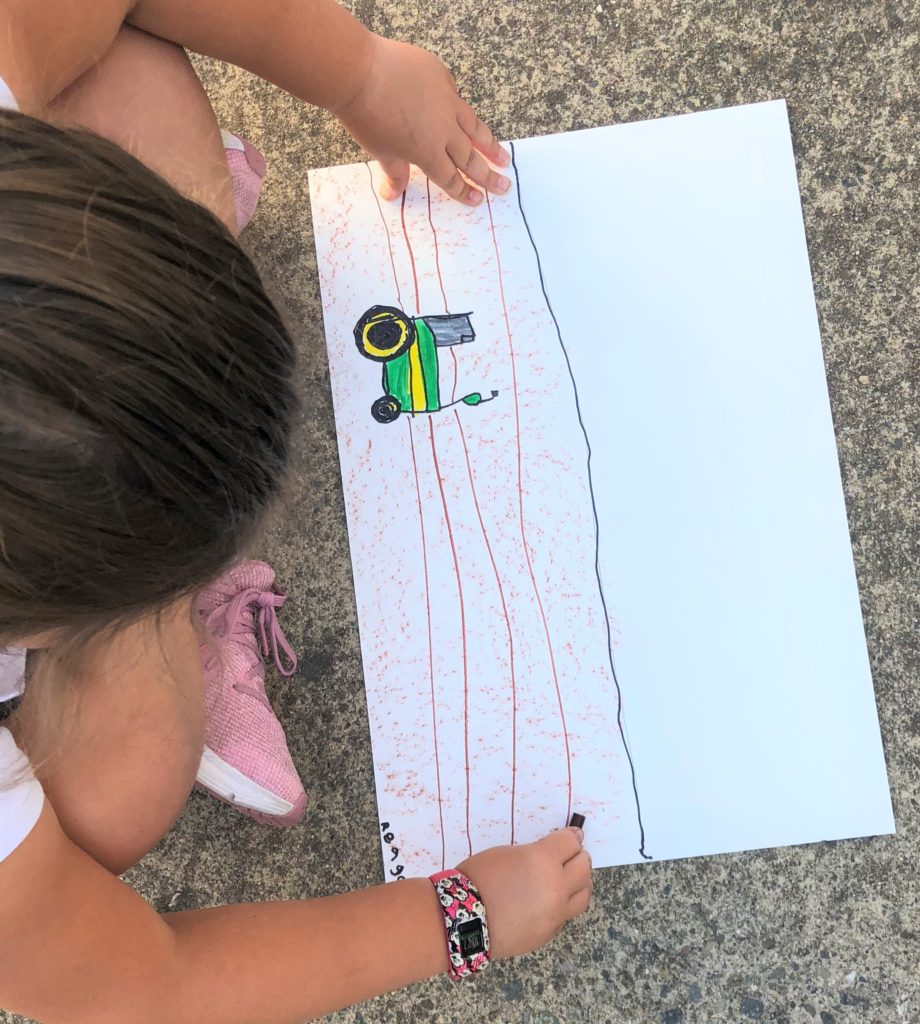
Day 4
We did another guided drawing making the barn. I highly recommend having another coloring page for this. First with practice and then the final barn. After they trace over the lines with sharpie, they color the barn with a red crayon. This is a nice “resist” moment.
Day 5
Using a white oil pastel (preferred) or white crayon, students make clouds in the sky. Then, using black sharpie markers, they add a fence line. We talked about how the fence posts should always go vertically and not slant with the hill. Finally, they watercolor the sky blue.
Day 6
This is the fun day where they create their pumpkins for their farm. I gave each student and long strip of orange construction paper. They drew their pumpkins on it and cut them out. I encouraged them to put the glue on the pencil showing side so it did not show when glued down. Using markers, they added lines on their pumpkins and curling leafy vines.
Here are some finished Pumpkin Farm pieces!
Kindergarten – Science – Earth Sciences
3. Earth is composed of land, air, and water.
a. Students know characteristics of mountains, rivers, oceans, valleys, deserts, and local land forms.
b. Students know changes in weather occur from day to day and across seasons, affecting Earth and its inhabitants.
Kindergarten – History – Learning and Working Now and Long Ago
K.3 Students match simple descriptions of work that people do and the names of related jobs at the school, in the local community, and from historical accounts.
K.6 Students understand that history relates to events, people, and places of other times.
- Understand how people lived in earlier times and how their lives would be different
today
1st Grade – History
1.2 Students compare and contrast the absolute and relative locations of places and people and describe the physical and/or human characteristics of places.
4. Describe how location, weather, and physical environment affect the way people live, including the effects on their food, clothing, shelter, transportation, and recreation.
2nd Grade – History
2.2 Students demonstrate map skills by describing the absolute and relative locations of people, places, and environments.
4. Compare and contrast basic land use in urban, suburban, and rural environments in California.
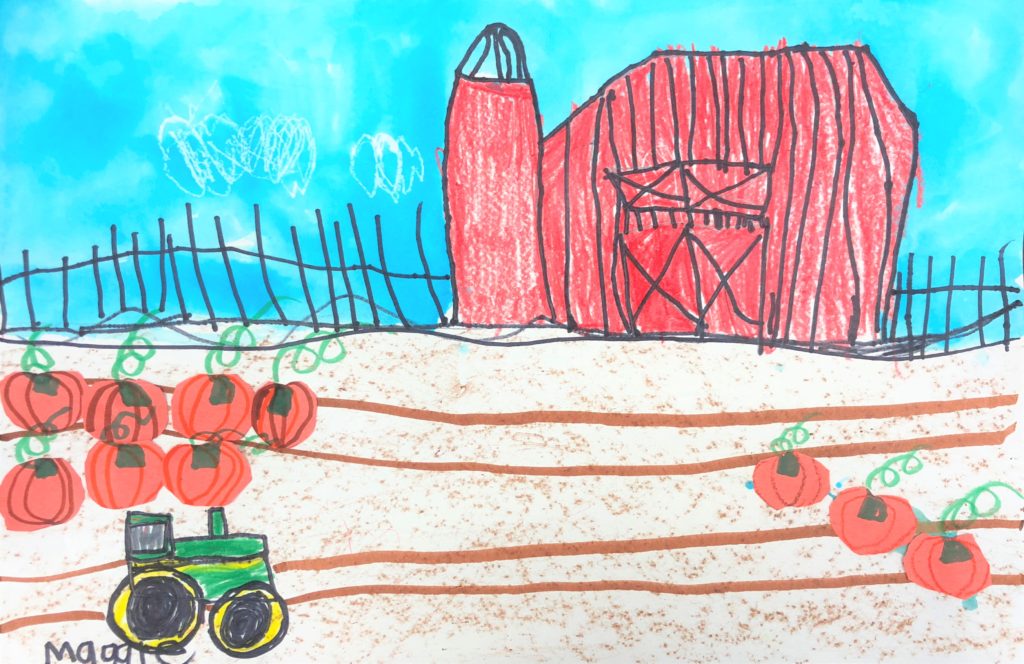
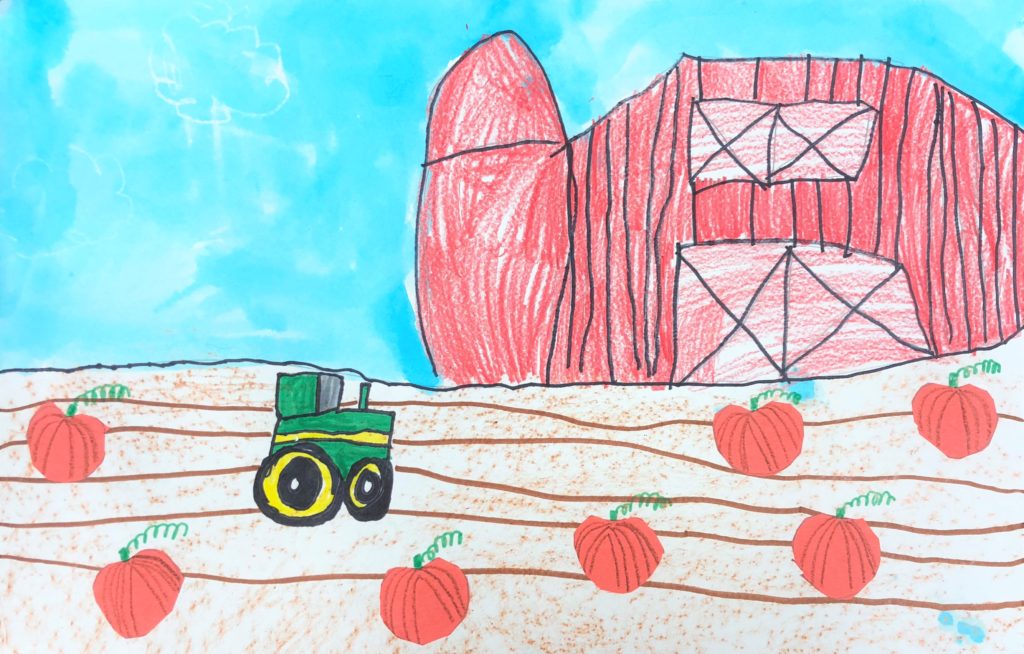
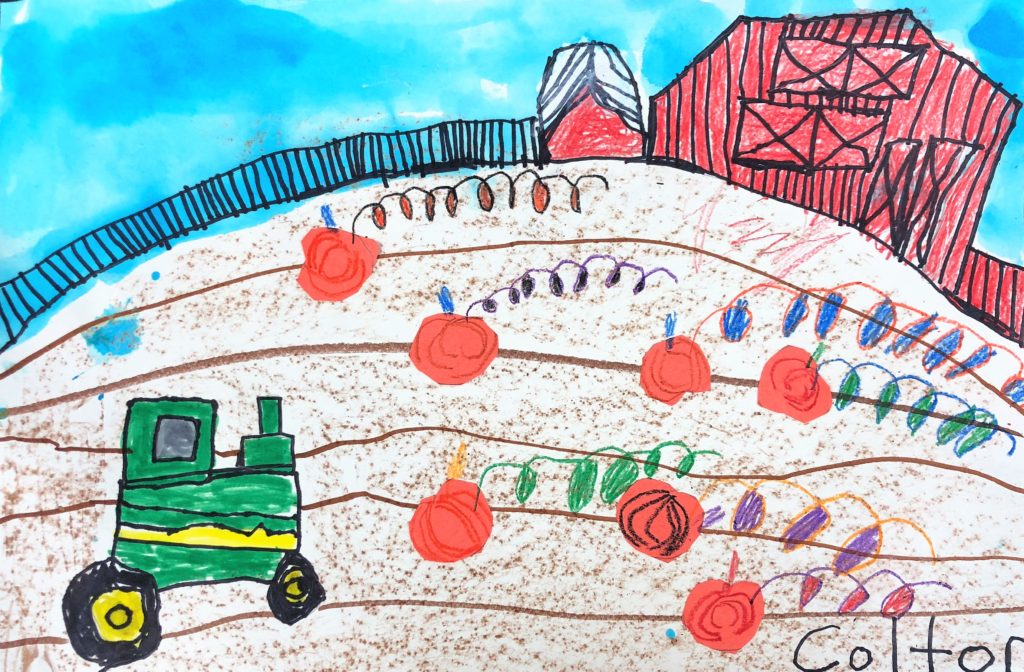
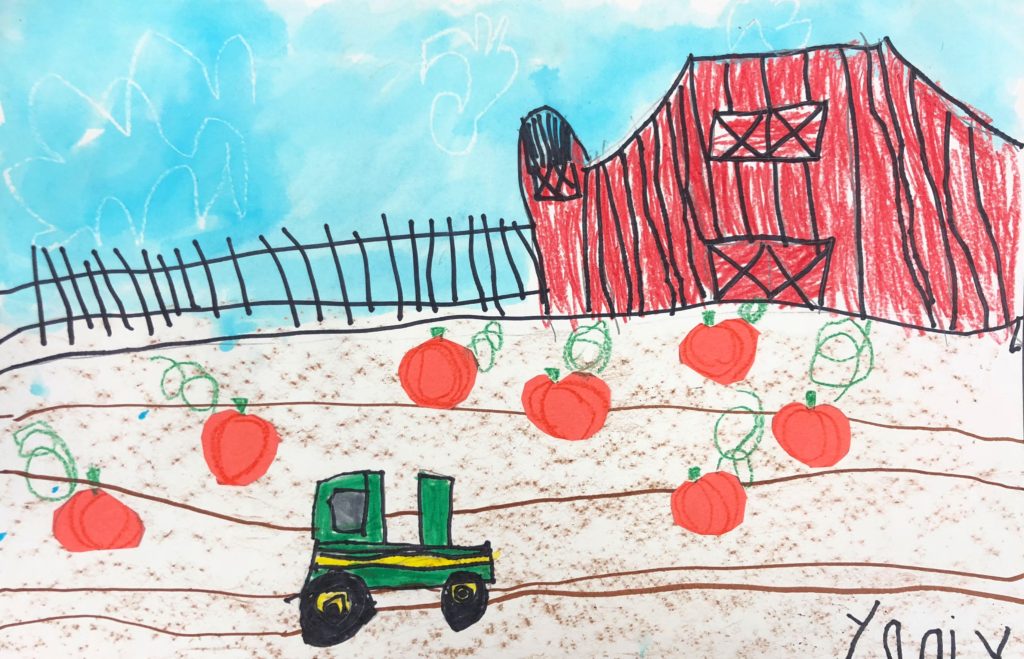
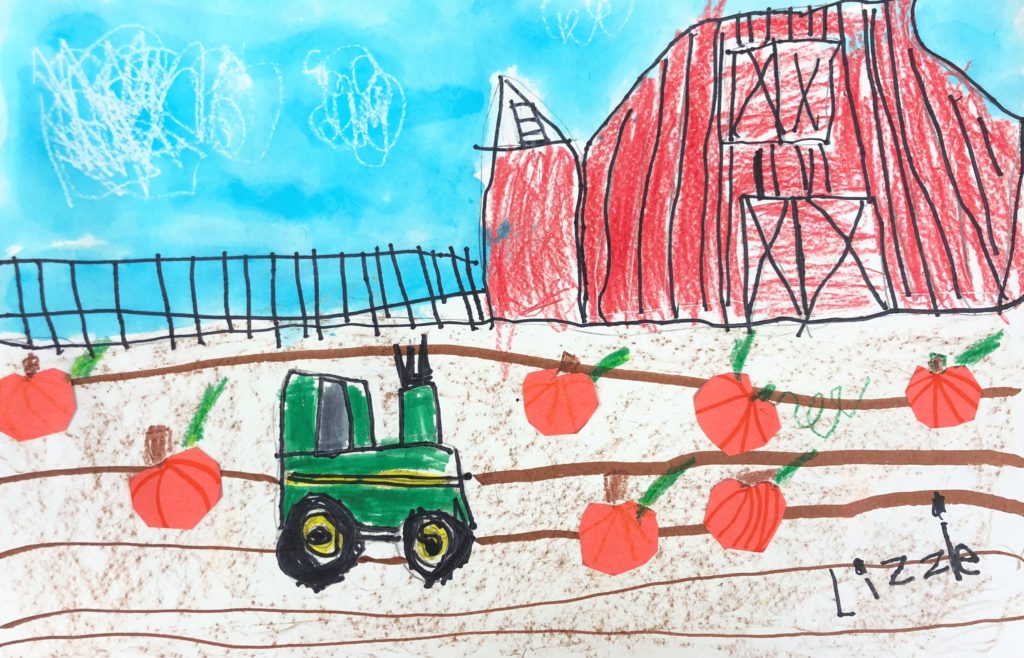
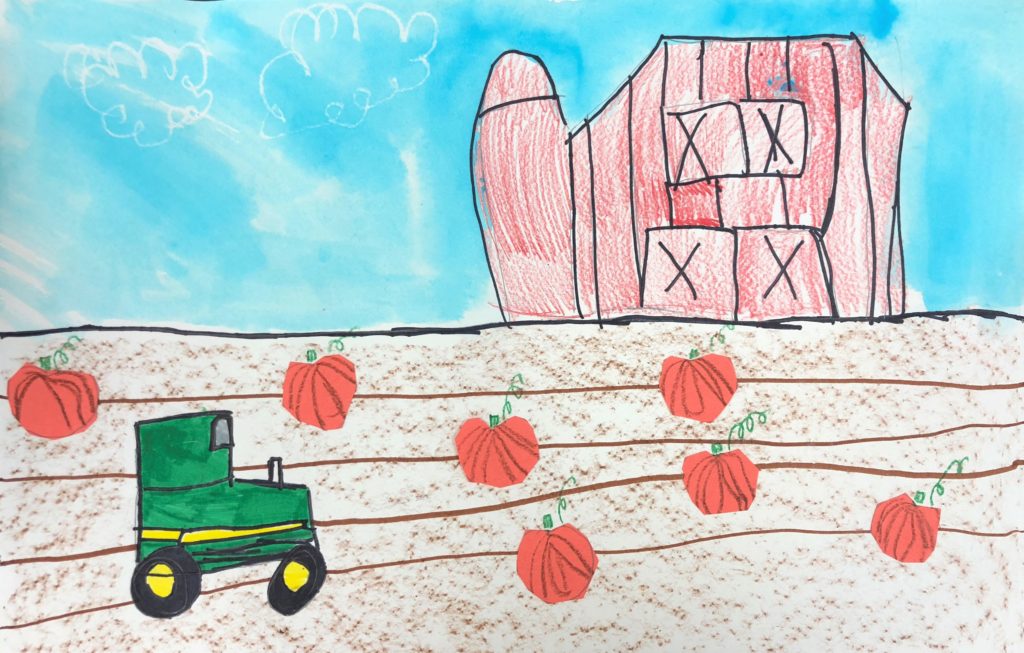
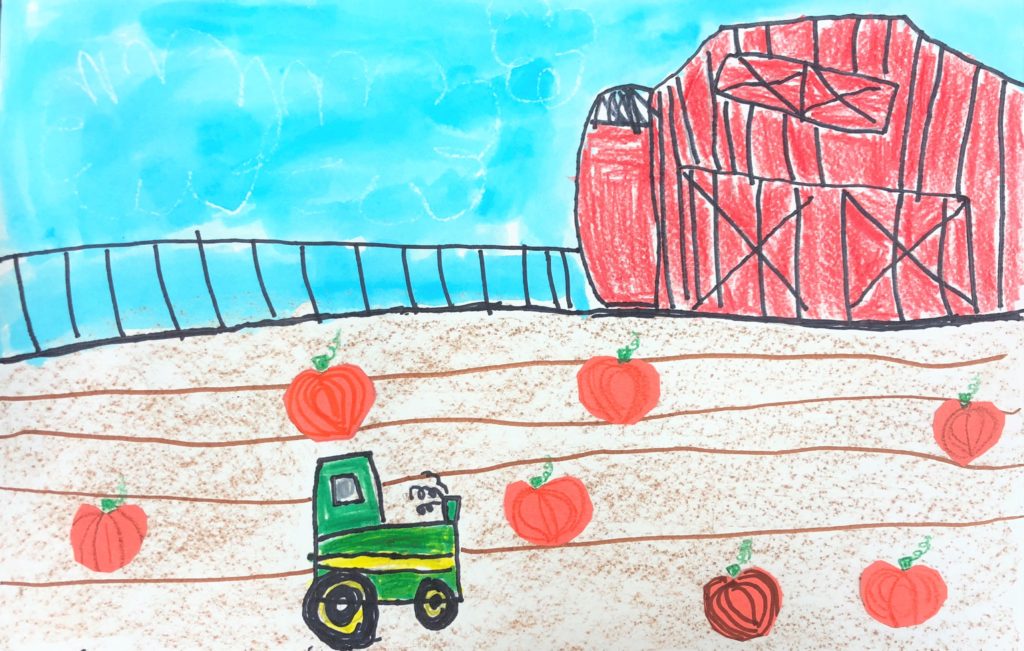

Another leahnewtonart.com project finished! This was very interesting because of all the different components: the tractor, the barn, the furrows, the sky and the pumpkins, all with their own mediums. We had so much fun, especially when we left the classroom looking for different textures to use for the furrows (we used a different texture for each row) which even included the principal’s desk. One student even used the bottom of her shoe! Thanks again for providing this awesome project and inspiration.